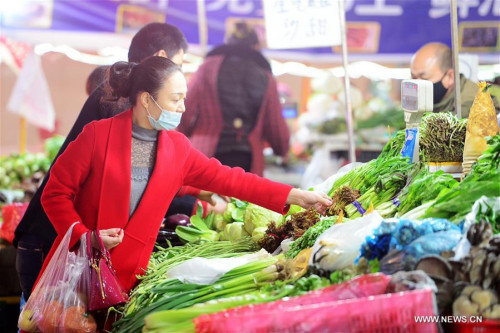
Residents purchase vegetables at a supermarket in Shijiazhuang, capital of north China's Hebei Province, March 9, 2016. (Photo: Xinhua/Zhu Xudong)
Chinese consumer confidence has remained surprisingly resilient over the past three years despite the slowing economic growth, as a result of more selective and careful spending, according to a new report from McKinsey & Co.
Daniel Zipser, partner in McKinsey's Shanghai office and leader of its China consumer and retail practice, said shoppers have been shifting their focus to premium segments, away from what are considered mass-produced items.
Half of the respondents in the McKinsey's 2016 China Consumer Report said they look specifically for the best, most expensive products, a significant increase on previous years. The same share said they are allocating more of their income to lifestyle services and experience spending.
"Chinese consumer trends tend to shift in an instant, thanks to the contribution of social media, and at the moment they have turned toward premium products," said Zipser.
The research was gathered from 10,000, aged between 18 and 65 in 44 cities, who were given 60-minute face-to-face interviews.
Zipser said a rising proportion of Chinese consumers are also focusing their loyalty onto fewer brands, and the number willing to switch to brand names outside their "short list" is dropped sharply.
Gong Fang, another partner in McKinsey's Shanghai office, said in the apparel sector, the number of consumers willing to consider a brand they hadn't bought before, dropped from 40 percent in 2012 to just below 30 percent last year.
"It is essential for both international and domestic brands to understand and respond to such changes in Chinese spending habits," said Gong.
Another major trend was that more Chinese consumers are spending money outside China during overseas trips.
The study suggested 70 million Chinese traveled overseas in 2015, making 1.5 trips on average, with shopping an integral part of the experience.
Of those, 80 percent made purchases, and nearly 30 percent actually chose destinations based on their shopping opportunities.
Among international travelers, around half make their purchases of watches and handbags, while apparel and cosmetics were the most frequently bought categories.
"Overseas shopping will remain popular among Chinese consumers who are mostly taking on trips as groups and family units," said Gong.


















































